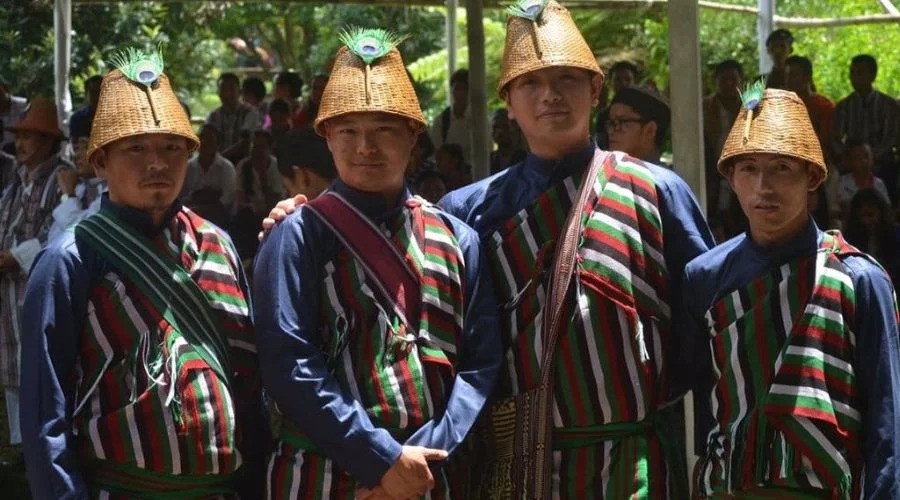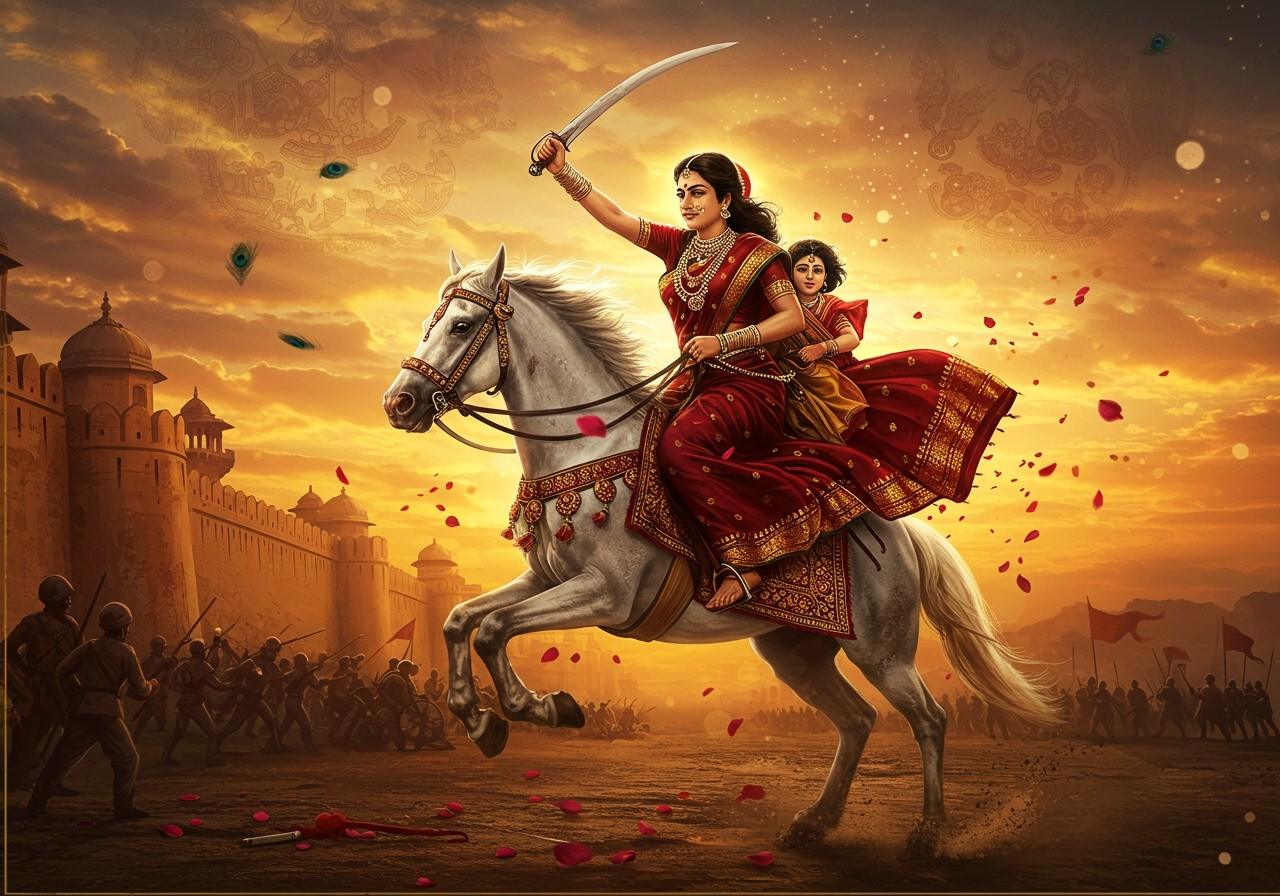By Dr. R. M. Pant
Perched in the Eastern Himalayas, Sikkim the smallest state of the Republic of India is not only known for its serene beauty and bio-diversity but also for diverse cultural canvas characterized by people belonging to different communities living in perfect harmony. Colourful cultural practices, festivals and each community having its unique lifestyle grounded to their roots without conflicts makes this small state an ideal haven for a multi-cultural society.
‘Denzong’ (the Valley of rice) as aboriginals of the state call it, Sikkim is also called ‘Sukhim’ (Happy House) and Indra-khil (Abode of Gods). Predominant communities of Sikkim are Lepcha, Bhutia, Limboo, Tamang, Sherpa, Rai, Gurung, Kami, Damai, and many more, however broadly all these communities come under three umbrella categories i.e. the Lepchas, the Bhutias and the Nepalese.
The Lepchas: The Lepchas, the original people of Sikkim are also known as ‘Rongpas’ which literally means ‘ravine dwellers. Their homeland in the pristine Himalayan heights is known as ‘Mayel Lyang’, which truly represents its meaning ‘the land blessed by God’.
Lepchas are expert hunters and live a nomadic life since time immemorial and exibhit high degree of adaptability towards changing realities and are settled mainly in Dzongu, Sikkim and Darjeeling region besides a sporadic population settled in Nepal. Once a nomadic tribe now is showing little interest in migrating from their heavenly ‘haven’. Their knowledge to survive in rough and tough terrains of Himalayas makes them comfortable even in the most adverse times as their traditional knowledge comes as their saviour all the time. Besides traditional knowledge they are also quick in adopting new technologies which enhances their adaptability to changing world.
The Lepchas; children of Fudong-thing and Nuzong Nyu: It is believed that the mother creator Ibtu-mu made this earth and heaven. She shaped the mountains and lakes and animals. Last of all she took pure snow from the top of Mt. Kanchendzonga, made a human shapewith this snow and infused life in her creation Fudong-thing.To give company to this lonely soul, mother creator created a woman called Nuzong Nyu. First two humans lived in Ne Mayel Kyong, the ancestral home of the Lepchas that is believed to be in some inaccessible areas near Mt. Kachendzonga. Though commanded by Ibtu-mu to live as brother and sister, they entered in to physical relationship. The outcome of this forbidden union was emergence of offspring in the form of devils and evil spirits which are believed to be haunting the Lepchas even today.
Having learnt about this inauspicious union, the Gods ostracised this duo from their idyllic haven to the mundane world where they were blessed with children and this is how the Lepchas came to this world.
The Lepchas and their religion: Originally the Lepchas believed in animistic/ shamanistic religion ‘Mun’ but influences of Bhutias made majority of Lepchas to adopt Buddhism. The ‘Mun’ religion which derives its name from the male priest basically focusses on ‘warding off’ the evil spirits and propitiating nature and spirits for the protection of its people against calamities and misfortune. Animal sacrifices at the altar of deities are performed to appease the benevolent spirits and various deities. With the passage of time, Mun and Buddhism has amalgamated in the region and the ceremonies of these two religions are performed simultaneously. Yet the Lepchas are keeping few of their basic values intact. Concept like asceticism and individual responsibility held high in Buddhism are alien to the Lepchas and for that reason, they are sometimes referred to as ‘animistic Buddhists’.
Consistent and organised efforts of the Christian Missionaries have led to conversion of a good number of the Lepchas to Christianity.
‘The Baptist mission went to the length of translating and printing in the artificial Lepcha script three books of the new testament. This seems to have been a work of almost complete supererogation, for the Lepcha script, never widely known, has completely fallen in to disuse; in order to read the scriptures Lepchas have to learn a new and otherwise completely useless, alphabet; most of them are far more familiar with Nepali’, writes Gorer.
Despite having adopted Buddhism and Christianity, the Lepchas still practice ‘animism’.
Culture: The Lepchas have their own script called ‘Rong’ and ‘Lepcha’ language known as ‘Rong-aring’ or ‘Rongring’. The development of Lepcha script is attributed to Lepcha scholar Thakung Men Salong, who is supposed to have invented it in the 17th century.
‘Tendong Lho Rum Faat’ is the main festival of Lepchas celebrated on August 8every year. Legend goes that to stop a deluge that nearly swallowed Sikkim, Rum (God) had to intervene and saved Sikkim from drowning. To protect themselves from this deluge caused by heavy rains, Lepchas had to move to Tendong Mountain and spent forty days and nights atop. This festival is celebrated to commemorate that scary incident and Lepchas offer prayers to propitiate nature and to avoid such calamities in future during ‘Tendong Lho Rum Faat’. ‘Zxo-Mal-Lok’ is a folk dance which couples perform to portray sowing and harvesting of paddy and ‘Kinchum-Chu-Bomsa’ is performed to describe the natural beauty of the region. While performing these dances males wear colourful dress called Thokro, Yenthatse (shirt), Tomu the lower garment, Shambo (cap) and Kom Bhankup (multipurpose knife) around their waist. Women wear Dumbun with Tago, loose blouse supported by a Nyamrek (belt). They also adorn Namchok (ear rings) and Gyar (bracelets).
The Lepchas; declining denizens of Mayel Lyang: The Lepchas are the original inhabitants of Sikkim and Darjeeling hills. Influx of the Bhutias started in the 14th century to their land of Mayel (ancestral land) and by the end of 17th century, the Lepchas had become their subjects. With this, the ‘Red Hat’ lamas converted majority of the Lepchas to ‘Buddhism’ and for next three centuries, the Lepchas were dominated by the Bhutias, the Nepalis and later by the British.
Influence of Tibetan Bhutias led to Tibetisation of the Lepchas in the 17th Century. Later with British annexation of Sikkim and Darjeeling in 1835, they became subject to British rule. Britishers brought large number of Nepalese immigrants to the region for construction and agricultural work which reduced these original inhabitants of Sikkim to a minority. As per Gazette of 1891, the Nepali constituted 56 percent of the population, the Lepchas 19 percent and the Bhutias just 16 percent. In 1931 census, the total population of the Lepchas was 25,780, a fall of about five thousand from 1901 census. After a century, the number of Nepalis have gone up to 75 percent of the total population of Sikkim. Bhutias have more or less maintained the same percentage in the total population whereas the Lepcha population has declined to 9 percent and facing a severe threat of extinction. Along with the Lepchas, their rich cultural heritage is also facing a threat. As per 2011 census, Napali population stands at 77 percent followed by the Bhutias and the Lepchas with their share of 16 and 9 percent respectively.
Dongu Lepcha Reserve: A continuous fall in their population made the Lepchas vulnerable to extinction which necessitated H. E. Chogyal, the King of Sikkim to convert one of his estates Dzongu as ‘Lepchas Reserve’ to protect ‘pure blooded Lepchas’ and ensure that this homogenous society lives undisturbed by alien influences.
Dzongu, a reserve area for the Lepchasisspread over 15,846 hectares at the feet of mighty ‘Kingtsoom Zaongboo Choo’, yes, that’s the Lepchan name of Mt. Kachendzonga. Only the Lepchas have the right to own land here and this policy has ensured that the Lepchas remain undisturbed from outside influence. ‘but beyond the reservation of this pieceof land for their exclusive use the society has not been interfered with, nor preserved as a piece of museum; it is still, in the state of constant modification’, Gorer’s prophetic statement made decades ago proved true as many young Lepchas are running many enterprisessuccessfully and modernity has made inroads in this rather sleepy region.
The Lepchas the adapters in the time of change: When the change is happening at a fast pace globally, the Lepchas are not lagging behind. The present generation of Lepchas is open to modern education unlike their ancestors who showed reluctance to modern education. Literacy rate among the Lepchas is rising in an impressive manner.
Agriculture continues to be the mainstay of their economy. Wage employment schemes of central government like MGNREGS have also opened avenues for income generation for the Lepchas of the region. Large cardamom, once a major cash crop faced decline in production due to diseases which need to be addressed with the help of experts. Market linkage is a weakness for marginal farmers and the Lepchas are looking up for governmental support. Traditional crops, livestock rearing is also a source of earning for these ‘Ravine dwellers. The Lepchas have deep connection with forests and since time immemorial, they are drawing resources from forest for their substance.
This ‘Mayel Lyang’ of the Lepchas has tremendous scope for promotion of tourism and this one single sector has the potential to ‘turn aroung’ the economy of the Lepchas. Off-late a few homestays have come up in Dzongu and growth of other allied activities is also remarkable.
Support from many government organizations like forest department, department of tourism, Rural Management and Development Department etc. and many NGOs is facilitating the Lepchas in their march towards development.
Conclusion: The Lepchas, the aboriginals of Denzong or present day Sikkim fell victim to situations that made them subjects of the Bhutias, the Nepalis and later by the British. It was a land mark intervention from the HE the Chogyal of Sikkim Kingdom to create a separate ‘Lepcha reserve’ to nurture ‘pure blooded Lepchas’ in Dzong, which has helped this depleting highland tribe in sustaining their culture in its pure form.
With increasing government and Non-government Organisation’s support and proactive generation of the Lepchas, this ‘Mayel Lyang’ or the ‘Land blessed by the God’ will once again ascend to the status of ‘Ne Mayel Kyong’, the original ancestral haven of the Lepchas created by the God for ‘Fudong-thing’ and ‘Nuzong Nyu’.
References:
1. Gorer.G, ‘Himalayan Village: An account of the Lepchas of Sikkim’,Pilgrims Publishing, Varanasi, 2005.
2. Lepcha J, ‘Assessing Socioeconomic Status of the Indigenous Lepcha Community: A Case Study from Dzongu in Kanchendzonga Landscape, India.
3. Yeshi Dome, ‘Sikkim’, Tryst and Traces, Gurgaon, 2011.
4. Bhasin, V, ‘Settlement and Landuse Patterns in the Lepcha Reserve-Dzongu Zone in the Sikkim Himalayas, India.
6. www.wikieadia .org






